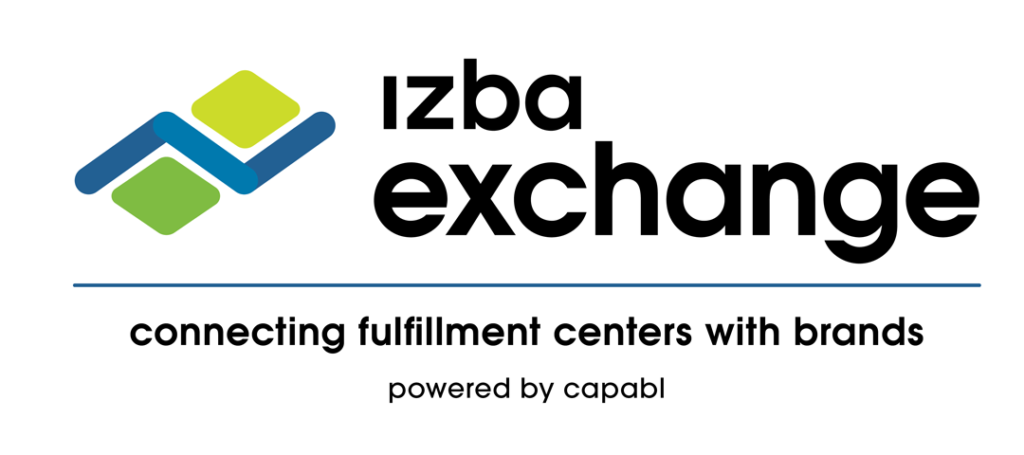
In any supply chain, fulfillment is one of the most crucial components that ensure and retain its integrity. From production to marketing, all efforts are wasted if one order doesn’t make it on time to the right customer.
Rather than categorizing it as an uncontrollable factor in your business venture, it’s time to research and figure out a way to stay ahead of the problem.
What is Order Fulfillment?
Order fulfillment refers to the operations that any business executes from the time an order has been placed to the product’s delivery. Naturally, it means much more than just picking something up and dropping it at the right place.
This process entails understanding, planning, and strategizing about how a product makes it to the consumer over geographically vast regions.
Order fulfillment isn’t just about delivering a product in time. Delivering the wrong product, the wrong size, or even storing it in the wrong way or place can jeopardize the efforts made to complete that sale.
And what’s worse is that this doesn’t just end in a profit-not-made. A bad review left by an angry customer is enough to cause sales numbers to go down significantly.
Why Should Businesses Prioritize Fulfillment?
To put it simply, delivering one order right doesn’t seem like a tough job for a business to handle. But what’s overlooked in this assumption is that it’s not just one order that’s being delivered. It’s not even a hundred.
Hundreds of thousands of products are shipped by fulfillment companies every month and these vary as per their size, composition, their storage and logistical specifications.
Therefore, it’s safe to say that order fulfillment isn’t easy work and considering that we’re still not working with robotic fulfillment as of yet, human and manual errors are inevitable.
This proves how and why fulfillment has remained one of the most difficult aspects of the supply chain that needs a lot of improvement.
Seeing as how every product-based business relies on fulfillment services, it’s not just e-commerce, local retailers or manufacturing companies that should prioritize fulfillment optimization.
Sooner or later, growing startups are bound to find themselves asking whether they should take the burden upon themselves or outsource it to a fulfillment center. Because optimizing fulfillment has shown to increase profits by almost 40%.
As customers prefer faster delivery times and easier delivery methods including options like BOPIS and curbside pickup, conversions and sales go up when businesses deliver on these promises.
Common Fulfillment Problems Faced by Businesses
Fulfillment centers face a lot of problems on a daily basis and most of these can be blamed on inefficient communication and manual errors.
While the latter can be considered unfortunate circumstances and disregarded, the former is a cause of worry and it has been this way for some time now.
A typical agreement with a fulfillment center doesn’t entail daily real-time reporting. Rather, these contracts state the maximum level of accuracy that these centers can guarantee for your inventory.
Also known as Service Level Agreements (SLA), these contracts are based on the FC’s (Fulfillment Center) capability to fulfill open orders.
During this process, there are several problems that can be identified from the time the products make it to the FC to the time they’re delivered:
1. Inventory Management
A product is manufactured and shipped to the geographical location that has the fulfillment center. Once the product makes it there, it needs to be stored according to its specifications. For example, you can’t store hazardous materials like chemicals right alongside food and edible items.
Similarly, the latter will also require that they be stored in a big enough freezer without getting affected by one another.
Other types of products like décor, furniture and electronics also have their own sizes and shapes that need to be handled accordingly. Suffice it to say, there are several important things to consider when storing inventory.
Then comes the part for labeling and locating items in your inventory that need to be shipped. This is another error-prone process that can jeopardize sales for brands that have FCs delivering wrong sizes, wrong types or wrong colors of products to customers.
Not only is it essential for an FC to have correctly and adequately labeled inventories, but it’s also important for these items to be located promptly.
After the item has been located and loaded onto the delivery vehicle, the problem most businesses and customers face with FCs is the inability to track their items.
Since consumers and vendors aren’t able to track their products in real-time, this raises a lot of suspicions, doubts and even impatience.
2. Lack of Communication and Transparency
Statistics show that consumers and end-users always prefer tracking options for their deliveries.
This is because they don’t have the option to call up the delivery guy and ask them for an update which is why they’re bound to rely on fulfillment centers to provide tracking capability.
While this isn’t something that’s impossible to achieve, it’s certainly complicated for FCs to take the responsibility of becoming transparent with their partners and consumers.
And although the results speak for themselves in favor of those who provide such transparency, it’s not just the consumer and the vendor that can benefit from such visibility.
Fulfillment centers rarely get appreciated whenever they do good work. As explained above, for many, order fulfillment doesn’t seem like a tough job but when you consider hundreds of thousands of orders, the story becomes drastically different.
Which is why it’s recommended by experts for FCs to start using software that allows them, their partners and even end-users to track their orders in real-time.
3. Inefficient SLAs
SLAs as defined above are guarantees for a percentage of accuracy that an FC promises at the time of negotiation.
Although the quoted figures are almost always around 90%+, vendors and businesses either don’t pay attention to it or take a lot of time deciding over which fulfillment center to go for.
Simply put, you can’t have a low accuracy guarantee because you can’t afford canceled, late or failed deliveries.
And thinking that your hands are tied is a fault on your part because there are several better ways to go about managing your supply chain effectively.
Optimizing the Order Fulfillment Process
Now that we’ve identified the order fulfillment process and the complications that arise during it, let’s take a look at order fulfillment optimization.
Right off the bat, each company and business that has overcome problems such as COVID-19, Russia’s war on Ukraine and the economic and geopolitical sanctions across the globe have done so by uniquely setting up its own supply chain.
That is to say, by identifying problems in and optimizing their fulfillment process, they have achieved record success rates around the world. Here’s how you can do it:
How to Optimize the Order Fulfillment Process?
1. Enhanced Ordering Systems
Businesses need to offer a clear view to their customers about what they should expect.
That means order details, delivery estimates and delivery information along with return policies should be mentioned clearly.
Additionally, this also means everything from your checkout experience to the delivery of the product should be visible to the customers as well as the FC that’s holding your inventory.
Clearly laid out order management systems translate into increased efficiency.
This also means that you shouldn’t only offer your buyers a user-friendly website, but you should also start thinking about using more than just Excel sheets.
2. Employ CRMs and WMS to Track Inventory
Present everything in a formidable, coherent and detailed online software that replaces the contemporary manual process.
Employ a CRM, WMS, SCM or a custom system that offers an automated amalgamation of all your required tools with features like tracking visibility available for customers.
This is essential for your warehouse workers who have an awfully difficult time keeping track of inventory with manual sheets.
Having software with a user-friendly interface that details SKUs, storage information and delivery information can help warehouse workers identify items more efficiently.
It’s no secret that technological applications are needed and will inevitably be employed.
And though we all await robotics to ease things with its magic, we must use contemporary AI-powered, integration-based supply chain management system software that can automate error-prone and complicated tasks.
While it may not seem easy to present everything to end consumers at first, you can safely offer your partners portals to view the status of their inventories and offer complete transparency for deliveries.
3. Listen to Consumer Demands
Consumer demands are always changing and it’s up to businesses to offer something new for customers to prefer.
A recent introduction to options like BOPIS (Buy Online Pick-Up In-Store) may have seemed like a crazy idea at first, but the stats speak for themselves.
People who discovered this option availed and loved it as it caused a severe reduction in the buying process time.
Since customers didn’t want to wait in lines, they just ordered what they wanted online and picked it up at the store.
Another option that became a preference was curbside pickup which takes even more time off the whole process.
Once you pay for the product online, you drive to the nearest local store and park at the entrance as an associate brings the products to them.
4. Consider 3PL Fulfillment Providers
Outsourcing is the obvious option for those who don’t have the initial investment to run their own warehouses. This is where 3PL (third-party logistics) providers come in.
Although there’s a distinction made between FCs and 3PLs, they help you achieve the same objective.
To store and transport your goods to where they need to be delivered, these vendors will provide you with an SLA that you’ll need to compare with the competition to see which vendor you can go for.
While it does seem like a cheaper option in the beginning, it doesn’t really pay off that well if you’re operating on a significantly larger scale in your local geographical region later on.
Expansion into multiple or foreign locations will require you to go for FCs and for that, you need to be prepared.
5. Measure KPIs for Improvement (Order picking accuracy, warehouse capacity, on-time deliveries)
Gauging performance and establishing goals to meet is essential for any strategic endeavor. Where possible, identify metrics and introduce KPIs to introduce effective systems.
Though it might seem like delays and failures, you will have to experiment and figure things out on a trial and error basis.
Some of the common KPIs identified in the fulfillment process that need optimization include:
Order Picking Accuracy is the percentage of accurately filled orders divided by the total number of orders. This will help you recognize more patterns in the field of operations that can be improved.
Warehouse capacity is another important metric to measure how and when the warehouse space can be utilized sufficiently with offset demand forecasts.
On-time deliveries is the value calculated against the total number of orders completed and is perhaps one of if not the most important metric for a fulfillment operation.
Similar to the above, there could be other specific areas of your operations that can serve as important points to investigate.
You can narrow down your search to the way individual products are being handled or plan better routes to increase efficiency and introduce better systems.
Adapt to Prosper
Labor shortages, geopolitical and economic crises and other supposedly uncontrollable factors are not always the end for businesses.
However, the year of the pandemic has shifted consumer activity online and has also consequently, increased exponentially. Since then, there have been several global changes that have affected all industries in different ways.
Companies and businesses that have adapted to the changing circumstances and figured out better ways around problems have witnessed significant growth which has resulted mainly from successful order fulfillment and customer satisfaction.
Those who denied or resisted change inevitably joined the list of startups that failed.
As it’s not only crucial for supply chain design, but also for your business in general, it’s necessary that you do whatever it takes for order fulfillment optimization.
Seek consultation from experts at Izba to establish and scale your business beyond.






2 thoughts on “What is Fulfillment Optimization? How to Optimize the Order Fulfillment Process?”
Pingback: Best Returns Software for Startups - izba
Pingback: E-Commerce Supply Chain Challenges All Businesses Face - izba